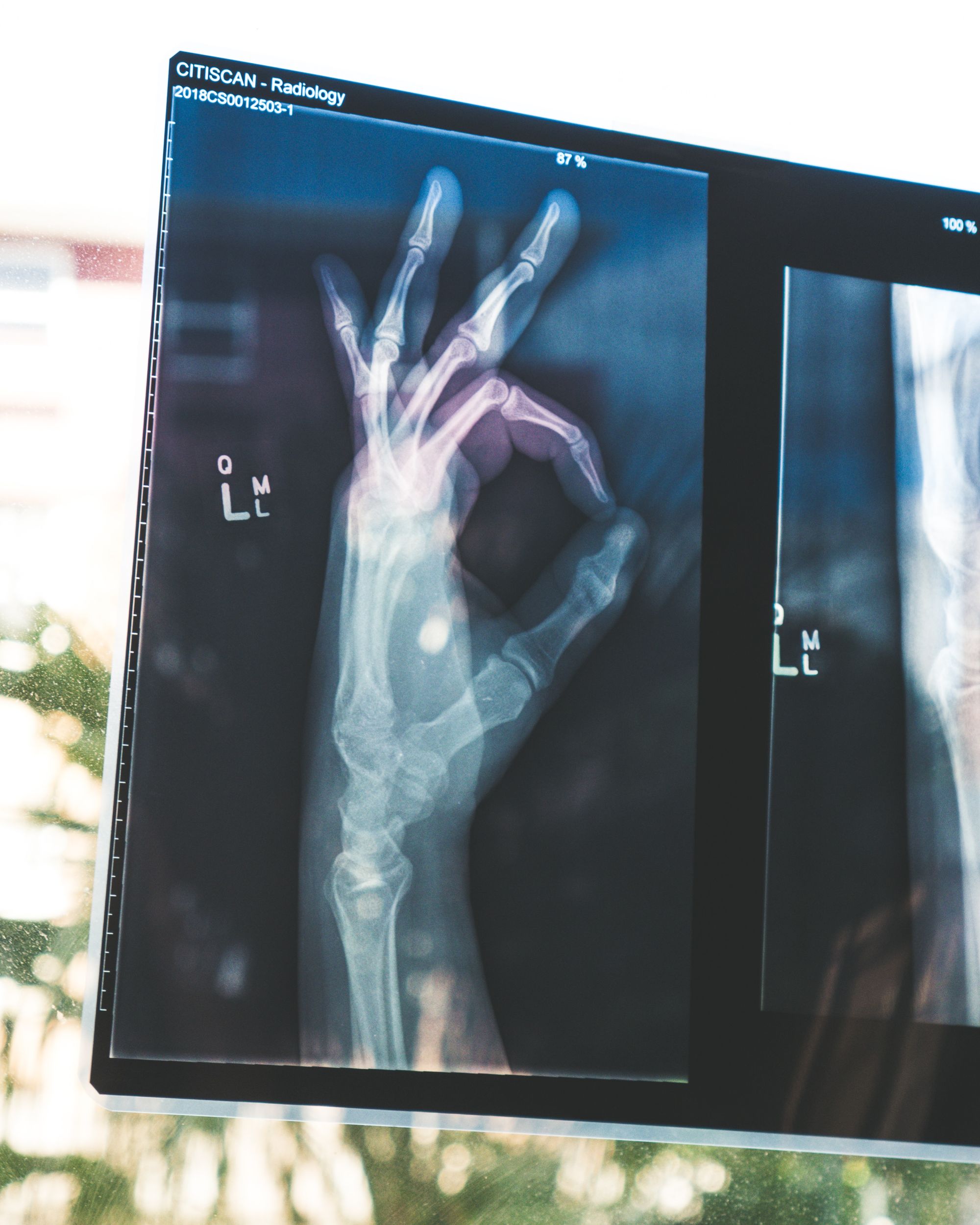The Government of Goa has made a provision for auto-renewal of License to Work a Factory under the provisions of the factories Act 1948 ("Act") and Goa Factories Rules 1985 ("Rules"), in accordance with the Department for Promotion of Industry and Internal Trade's ("DPIIT") Business Reforms Action Plan for States under Ease of Doing Business.

This act also involves Maintenance of a Health Register by all employers. This article serves as the guide to Health Register Form 27. Following are the topics covered:
- Goa Factories Rules 1985
- Form 27 - Health Register
- Authorities
- Health and Welfare
- Components to be included in Health Register
- Key takeaways
Goa Factories Rules 1985
The Factories Act is a law of social legislation established to ensure the safety, health, and welfare of workers at work. The Goa Factories Rules, 1985, are the rules that the state of Goa has created in accordance with the Act.
The Goa Government has amended certain provisions of the Goa Factories Rules, 1985, including application fees, approval of plans, use of premises as a factory, certificate of stability, application for registration, renewal of license, mode of fee payment, medical examination of workers, Latrine accommodations, pressure vessels or plant, medical examination, occupational health center, supervisory qualifications, and dangerous manufacturing process.
Factory eligibility for auto-renewal is conditional on the following:
1. Closure of findings of the Central Inspection System-based inspection if done during the previous term / after review of additional risk factors
2. No change in the particulars provided in the previous period's License to Work in a Factory in Form 4 / no change in the management informed in accordance with the necessary provisions
3. The fee as set forth in the Rules.
If a factory does not match the above conditions, the application for a license renewal will be handled according to the pre-existing rules.
Compliance
- Form 17 - Register of compensatory holidays
- Form 18 - Overtime muster roll for exempted workers
- Form 19 - Notice of period of work for Adult workers
- Form 20 - Register of Adult workers
- Form 21 - Notice of period of work for child workers
- Form 22 - Register of child workers
- Form 23 - Register of Leave with wages
- Form 24 - Leave Book
- Form 25 - Nomination for payment of wages due for period of leave with wages in the event of death of worker
- Form 26 - Certificate of fitness for employment in hazardous processes or dangerous operation
- Form 27 - Health Register
- Form 34 - Annual Returns
- Form 35 - Half Yearly Returns
- Form 36 - Muster Roll
- Form 37 - Register of accidents and dangerous occurrences
Applicability
The Act applies to all factories, including those run by the state and the federal government, where:
• 10 or more workers are employed with the use of power.
• There are at least 20 workers employed without the usage of power.
• If the activity is notified by the State Government, there will be less than ten personnel.
Competent Person
(1) The Chief Inspector may recognize any person as a "competent person" within such area for a period of not more than twelve months for the purpose of conducting tests, examinations, inspections, and certification for such buildings, dangerous machinery, hoists and lifts, lifting machine and lifting tackles, pressure plant, confined space, ventilation system, and other process or plant and equipment as stipulated in the Act and the rules made there under, located in such area.
(2) Provided, however, that the Chief Inspector may waive the qualifying criteria for a 'competent person' if that person has a great deal of experience and knowledge, but not the requirements for the facilities under his command: Provided further that when it is planned to recognize a person employed under the Chief Inspector as a "competent person," the State Government's consent must be obtained, and such a person shall not have the powers of a "Inspector" after being so recognized.
Furthermore, the 'competent person' recognized under this provision must be under the age of 65 and must be physically fit as determined by a trained Medical Practitioner for the purposes of conducting the tests, examinations, and inspections.
(3) The Chief Inspector may recognize as a 'competent person' within such area an institution of repute that has persons with the qualifications and experience set out in the Schedule annexed for the purposes of carrying out tests, examinations, inspections, and certification for buildings, dangerous machinery, hoists and lifts, lifting machines and lifting tackles, pressure plant, confined space, and ventilation systems as stipulated in the Act and the rules made there under.
(4) The Chief Inspector shall register an application in Form – 0-1 or – 0-2 along with a treasury receipt showing payment of ten thousand rupees towards the fees for the same, which shall be nonrefundable, from a person or an institution intending to be recognized as a 'competent person, for the purposes of this Act and the rules made there under, within sixty days of the date of receipt of application, either after having satisfied the requirements of this Act and the rules made there under recognize the applicant as a "competent person" and give a Form –0.3 certificate of competency, or reject the application and explain why.
The application must also be supported by a valid calibration certificate for the equipment the applicant has available for conducting tests, examinations, and inspections.
(5) The Chief Inspector may revoke a competent person's certificate of competency:
(i) if he has reason to believe that the competent person:
(a) has violated any condition stipulated in the certificate of competency; or
(b) has unauthorizedly carried out a test, examination, or inspection, or has acted in a manner inconsistent with the intent or purpose of the Act or the rules made there under, or has omitted to act as required under the Act or the rules made there under; or
(ii) for any other reason to be recorded in writing;
An institution includes an organization for the purposes of this provision.
(5) The Chief Inspector may, for reasons to be documented in writing, require the re-certification of lifting machines, lifting tackles, pressure plants, or ventilation systems that have been certified by a competent person outside the State.
Application for registration and grant of license
(1) After the Act takes effect, the occupier and manager of every factory that falls within its scope must apply to the Chief Inspector of Factories for registration and a license in Form 2; (1A) The occupier or manager of a place to which the Act's provisions are made applicable by a notification under section 85 of the Act must submit an application within 30 days of the notification's date.
(2) For payment of the fees stipulated for the purpose, each such application must be accompanied by a treasury receipt or an invoice for book adjustment, as the case may be. Provided that –
(i) Fees to be levied for the following groups of industries shall be half of those listed above, subject to a minimum of rupees five, if they do not work for more than 180 days in a calendar year:-
(a) Gur Factories,
(b) Cashew nut Factories,
(c) Rice Mills
(ii) Fees to be imposed for the first time in the case of other factories working for a portion of the year and beginning work on or after July 1st shall be half of those listed in the Schedule aforesaid, subject to a minimum of rupees five.
(3) If a factory falls within the Act's scope and the application for registration and grant of license is made after the manufacturing process has begun, the occupier and manager shall be liable to pay an additional fee equal to 200 percent of the fees payable per year, as specified in sub-rule (2).
Use of premises as factory
No occupier may use any premises as a factory unless:
(i) the plans are authorized by the Chief Inspector of Factories in respect of the following items:
(a) the site on which the factory will be located
(b) the building and extension utilized for the manufacturing process.
(c) the layout of equipment and machinery
(d) any changes to the manufacturing process, whether complete or partial (es);
(ii) the factory building, extensions, processes and machinery layout are in conformity with the approved plans;
(iii) the conditions subject to which plans are approved, are complied with;
(iv) a license is obtained under rule 7 from the Chief Inspector of Factories or renewed under rule 9, and the said license is valid at the relevant time. Explanation: For the purpose of this clause a license shall be deemed to be valid only if-
(a) the fees, including additional fees, if necessary are paid,
(b) the employment of workers for which license is granted is not exceeded.
(c) the installed power limit for which the license is granted is not exceeded
Form 27 - Health Register
All employers must maintain in Form 27 - Health Register in the given format.
Form No. 27
(See paragraph 9(2) of Schedule II to rule 131)
Health Register
FORM 27
(Prescribed Under Rule 122)
Certificate of Fitness for employment in hazardous
Processes/dangerous operations
(To be issued by Certifying Surgeon)
1. Serial number in the register of adult workers :
2. Name of person examined :
3. Father’s name :
4. Sex :
5. Residence :
6. Date of birth, if available :
7. Referred by –
(a) Name & address of the factory
(b) Name of the manager
8. The worker is proposed to be employ in –
(a) Hazardous process
(b) Dangerous operation
I certify that I have personally examined the above named person whose identification marks are............................ and who is desirous of being employed in above mentioned process/ operation and his/her age, as nearly as and can be ascertained from by examination, is................. years and in my opinion he/she is fit/unfit for employment in the said process/operation.
He/she is fit to be employed and may be employed in some other nonhazardous operation such as ........................................................
He/She may be produced for further examination after a period of..........................
He/She is advised following further examination......................................
He/She is advised following treatment.....................................................
The serial number of the previous certificate is ......................................
Signature or left hand thumb
Impression of person examined :
Signature of Certifying Surgeon:
Date :
Notes:- To be issued by the Certifying Surgeon and a copy to be maintained in a bound book or in a file.
Definitions
"Health Officer" refers to the Municipal Health Officer or the Directorate of Health Services' Health Officer, as well as any other individuals appointed by the government in that capacity; guidelines, instructions, and records.
Guidelines, instruction and records
Without limiting the occupier's general responsibility to comply with the provisions of section 7(A), the Chief Inspector may issue guidelines and instructions from time to time regarding the occupier's general duties relating to the health, safety, and welfare of all workers while they are at work in the factory.
Authorities
Powers of Inspectors
For the purposes of enforcing the Act, an Inspector shall have the authority to do all or any of the following:
(a) photograph any worker, inspect, examine, measure, copy, photograph, sketch, or test, as the case may be, any building or room, any plant, machinery, appliance, or apparatus; any register or document; or anything else provided for the purpose of ensuring the health, safety, or welfare of factory workers;
(b) in the event of an Inspector who is a duly qualified medical practitioner, to conduct any medical examinations that may be required in the course of his duties under the Act;
(c) in the event of an Inspector who is a duly qualified medical practitioner, to conduct any medical examinations that may be required in the course of his duties under the Act;
Provided that the powers of the Additional Inspectors shall, unless otherwise expressly provided in the notification under sub-section (5) of Section 8, be limited to the inspection of factories in respect of the following matters, namely:- Cleanliness (Section 11), over-crowding (Section 16), lighting (Section 17), drinking water (Section 18), latrines and urinals (Section 19), spittoons (Section 20), precautions in the case of fire (Section 38), welfare (Chapter V), working hours of adults (Chapter VI except the power of exemption under the proviso to section 62), employment of young persons (Chapter VII), leave with wages (Chapter VIII) and display of notice (Section 108):
Furthermore, all Additional Inspectors shall notify the Chief Inspector of any deficiencies discovered and suggested remedies for enforcing compliance with the requirements of the sections referred to above, who shall issue final orders in each case.
– The Chief Inspector or the Inspector may issue any directions in writing to the occupier or manager or both, any officer or authority appointed by the Government, subject to the provisions of the Act, and such occupier or manager or both, such officer or authority shall be bound to comply with such directions.
The power to issue directions under this rule includes the authority to order:
(a) the closure or prohibition of any factory or any part thereof, operation or process, machinery or plant; or
(b) the interruption or supply of electricity, water, or any other service: The Chief Inspector shall issue a show cause notice to the Occupier or Manager, or both, if the directions to be issued under this regulation consist of any directions stated in the preceding explanation, requiring them to show cause within fifteen days as to why such directions should not be issued:
Provided, further, that no such notice is required, and the Chief Inspector may issue such directions after recording the reasons in writing and obtaining due approval from the Government, where the reasons for such directions are that the activity or manufacturing process carried out causes pollution or degradation of the general environment, and/or the working conditions in a factory are in such a condition that they pose an imminent danger to workers.
Duties of Certifying Surgeon
The Certifying Surgeon shall arrange an appropriate time and place for the examination and certification of young persons who seek to obtain certificates of fitness, and shall give prior written notice of such arrangements to the manager of factories located within the local limits allotted to him.
The Certifying Surgeon must examine all persons involved in such activities and record the results of his examination in a health register (Form 7) kept by the plant management and presented to the Certifying Surgeon at each visit.
If the Certifying Surgeon finds that any person employed in such process is no longer fit for medical reasons to work in that process as a result of his examination, he shall suspend that person from working in that process for such time as he deems appropriate, and no person shall be employed in that process after suspension without the Certifying Surgeon's written approval in the health register.
Report from Health Officer
The Inspector may direct the manager to obtain a report from the Health Officer as to the fitness for human consumption of the water supplied to the workers at such time or at such intervals as he may direct, and to submit a copy of such report to the Inspector as soon as it is received from the Health Officer.
If ice is used in the drinking water, it must be pure and wholesome, and it must come from a source that has been approved in writing by the Health Officer.
If there isn't a drainage line, the effluent must be deodorized and rendered harmless before being disposed of in a way that the Health Officer approves.
Exemptions.- If the Chief Inspector is satisfied that any provision of sub-rules (33) to (45) or portion thereof can be suspended or relaxed without endangering the health or safety of any person, he may approve the suspension or relaxation in writing, describing such conditions as he deems appropriate. Any suspension or relaxation of any kind can be revoked at any time.
Safety Committee
1) In every plant in which
(a) 100 or more people are normally employed; or
(b) any procedure or operation determined to be dangerous under section 87 of the Act; or
(c) any 'hazardous processes' as defined under section 2 (cb) of the Act is carried out;
(2) The management representative on the safety Committee shall be:
(a) A senior official, who by his position in the organization can effectively contribute to the Committee's functioning, shall be the Chairman;
(b) A Safety Office and a Factory Medical Officer, wherever available, and the Safety Officer in such a case shall be the Committee's Secretary.
(c) A representative from each of the departments of manufacturing, maintenance, and purchasing.
(3) The workers must elect the workers' representatives on this Committee.
(4) The Safety Committee shall be composed of an equal number of management and employee members, with a minimum of six representatives.
(5) The Committee will have a two-year term.
(6) The Safety Committee will meet as needed, but at least once each month. The meeting's minutes must be recorded and made available to the Inspector upon request.
(7) The Safety Committee has the right to be sufficiently and suitably informed of:
(a) potential safety and health hazards to which workers may be exposed at work;
(b) In the case of the factory, data on accidents as well as data resulting from surveillance of the working environment and the health of workers exposed to hazardous substances, provided that the Committee agrees to treat the data confidentially and to use it solely to provide guidance and advice on measures to improve the working environment, as well as the health and safety of the workers.
(8)The Safety Committee's functions and responsibilities shall include the following.
(a) Assisting and cooperating with management in accomplishing the goals and objectives set forth in the occupier's "Health and Safety Policy."
(b) Dealing with all issues relating to health, safety, and the environment, as well as finding practical solutions to problems that arise.
(c) Educating all employees on the importance of safety.
d) Organizing educational training promotion events.
(e) Discussion of safety environmental and occupational health surveys, safety audits, risk assessments, emergency and disaster management plans, and the implementation of the reports' recommendations
(f) Conducting health and safety surveys, as well as determining the causes of accidents.
(g) Investigating any complaint about the possibility of an imminent threat to the workers' safety and health, and suggesting corrective actions; and
(h) monitoring the implementation of the recommendations made by it.
(9) If the Safety Committee cannot successfully carry out the functions referred to in sub-rule (8) due to the size of the factory or for any other reason, it may establish subcommittees to assist it.
(10) When subcommittees are formed, the provisions of sub-rules (3), (4), (5), (6), (7), and (8) apply to them as well."
Health and Welfare
Employment of young people in certain processes is prohibited.- No young person shall be employed in
(a) the spray application of asbestos;
(b) the breaking down of asbestos lagging for removal;
(c) the cleaning of sacks or other containers containing asbestos;
(d) the cutting of material containing asbestos with portable power driven saws; or
(e) the scaling, scurfing, or cleaning of boilers, combustion chambers, or smoke boxes, where his work exposes him to dust of such a character and to such an extent as to be likely to be injurious or offensive to persons employed in such work.
Lead processes.-
(a) Lead paint in the form of a spray shall not be used in the interior painting of any section of a ship or vessel.
(b) Wherever lead sheathing work is being done on ships to make cold storage chambers, effective exhaust draughts with portable extractors should be installed to remove lead fumes from the confined spaces.
Stretchers, ambulances and ambulance rooms, etc,.-
(a) There must be provided and kept readily available in every shipyard.
(i)a sufficient number of correctly constructed sling stretchers or other similar appliances for elevating injured patients;
(ii) a sufficient number of carrying or wheel stretchers; and
(iii) a sufficient supply of acceptable reviving devices and oxygen, all of which must be well maintained.
b) Every shipyard must have a responsible person or persons on hand during working hours who are responsible for summoning an ambulance or other means of transportation if necessary in the event of an accident or illness. Every shipyard must post legal copies of a notice identifying that person or, as the case may be, those persons, in prominent locations.
c) In any shipyard, other than a dry dock available for hire-
(i) when the number of people working is regularly in the thousands; or
(ii) A properly constructed ambulance room containing at least the equipment prescribed in the rules framed under section 45 of the Act shall be provided and maintained in good order and in clean conditions in any place where the number of people employed normally exceeds one hundred and is more than ten miles from a hospital. The room shall be used only for the purpose of treatment and rest, and it shall be under the supervision of a suitably qualified person who shall be available at all times during working hours, and a record of all cases of accident or sickness treated in the room shall be kept.
Health and Safety Policy
(1) Except as stipulated in sub rule (2)m, the occupier of every plant shall prepare a written declaration of his policy in regard to worker health and safety at work.
(2) All factories.-
(a) covered under section 2(m) (I) but employing less than 50 workers.
(b) Covered under section 2(m) (ii) but employing less than 100 workers; are exempted from requirements of sub-rule (1) :
As long as they aren't included in the First Schedule under section 2 (cb) or performing harmful activities or operations under section 87 of the Act.
(3) Notwithstanding sub-rule (2), the Chief Inspector may order the Occupiers of any of the factories, or any class or description of factories, to comply with the requirements of sub-rule (1) if he believes it is necessary.
(4) The Health and Safety Policy should contain or deal with:
(a) Top management has stated their purpose and dedication to health, safety, and the environment, as well as compliance with all relevant legislation obligations.
(b) An organizational structure to carry out the announced policy, with responsibility clearly assigned at various levels; and
(c) Arrangements to make the policy effective.
(5) In particular, the policy should specify the following:
(a) arrangements involving the workers;
(b) intends to examine an individual's health and safety performance at several stages when determining their career advancement;
(c) defining the contractors', subcontractors', transporters', and other agencies' responsibilities when they access the premises
(d) Including a review of the factory's health and safety performance in its Annual Report;
(e) Relevant techniques and methods, such as safety audits and risk assessments, are used to examine the state of health, safety, and the environment on a regular basis and to implement all necessary medical measures.
(f) Declaring its intention to include health and safety considerations in all choices, including those involving the procurement of plant, equipment, machinery, and materials, as well as employee selection and placement.
(g) Arrangements for informing, educating, training, and retraining its own personnel at various levels, as well as the general public, as needed.
(6) A copy of the occupier's stated Health and Safety Policy must be made available to the factory's Inspectorate and the Chief Inspector.
(7) the policy shall be made widely known by-
(a) providing copies to all employees, including contract workers, apprentices, transportation workers, suppliers, and others.
(b) posting copies of the policy in prominent locations; and
(c) any other means of communication in a language that the majority of workers understand.
(8) The occupier is required to revise the Safety Policy as needed, but it must be done in the following circumstances:
(a) whenever any expansion or modification that has an impact on the safety and health of people at work is made; or
(b) whenever new substance(s) or articles are introduced in the manufacturing process that have an impact on the health and safety of people who are exposed to them.
Confidentiality of information
(1) As required by regulations 90D and 90H, the occupier of a plant engaged in a hazardous process must disclose all information necessary to preserve the workers' safety and health to
(a) his employees and
(b) the Chief Inspector.
If the occupier believes that disclosing specifics about the method and formulas will harm his economic interests, he may make a representation to the Chief Inspector explaining why he is keeping such information.
The occupant will be given an opportunity to be heard by the Chief Inspector, who will then issue an order to the representation. An occupier who is aggrieved by a Chief Inspector's order has 30 days to file an appeal with the Government.
Medical Examination
Workers engaged in a "hazardous process" must be medically examined by a qualified medical practitioner, referred to as a "Factory Medical Officer" by the Chief Inspector, or by a recognized Occupational Health Laboratory under the supervision of a Factory Medical Officer, in the following manner:-
-The details of pre-employment and periodic medical examinations carried out as aforesaid shall be recorded in the Health Register in Form No. 7
- A worker who has been removed from a process under sub-rule (2) may only return to that process after obtaining a Fitness Certificate from the Certifying Surgeon and making appropriate entries in the Health Register.
- All factories must keep and maintain each worker's health record for a minimum of 40 years from the start of employment or 15 years after retirement or termination of employment, whichever comes first.
Making available Health Records to workers
(1) The occupier of every factory that performs a "hazardous process" must make the health records of any worker, including the record of workers' exposure to hazardous processors, available for inspection under the following conditions:-
(a) Once every six months or as soon as the medical examination is completed, whichever comes first;
(b) If the factory Medical Officer or the Certifying Surgeon, as the case may be, believes that the worker has displayed signs and symptoms of any condition listed in the Act's Third Schedule;
c) If the employee quits his or her job
(d) If any of the following authorities directs you to do so: - the Chief Inspector of Factories - The Commissioner of Workmen's Compensation of the Central or State Government; - The Director General of the Employees' State Insurance Corporation; - The Director, Employees' State Insurance Corporation (Medical Benefits); and - The Director General, Factory Advice Service and Labor Institutes.
(2) On receipt of an application from the worker, a copy of his or her current health records, including any records of employees' exposure to hazardous processes or, as the case may be, medical records, will be sent to him. X-ray plates and other medical diagnostic findings may also be made available to his doctor for review.
Components to be included in Health Register
Definitions
“suspension” means Suspension from employment in any process requiring contact with liquid from any bath is defined as a written certificate in the health registry (Form 26) signed by the Certifying Surgeon, who has the authority to suspend all persons engaged in such a procedure.
- Electrolytic plating or oxidation of metal articles by use of an electrolyte containing chromic acid or other chromium compounds
-No one shall be employed in the electrolytic chrome process unless a trained medical practitioner has evaluated him and determined that he is fit for the procedure. This examination will involve a visual evaluation of the hands, forearms, and nose, and will be done every one week.
-The results of such an examination must be recorded in Form No. 27 in a health register. The management shall keep the register, which shall contain the names of all persons employed in the stated process, as well as the certificate of fitness provided by the Certifying Surgeon in respect of each person.
-If the qualified medical practitioner believes at any time that a person is no longer fit for employment in the electrolytic chrome process, he must record his findings in the health register and notify the manager in writing that the individual is no longer fit for work in the process.
- The manager must send a person declared unfit by a registered medical practitioner to the Certifying Surgeon along with a report from the certified medical practitioner. After an examination, the Certifying Surgeon may suspend the person from working in the procedure. After suspension, no one may work without written permission from the Certifying Surgeon, which must be entered in or linked to the Health Register.
- Manufacture and repair of electric accumulators
- Glass manufacture
- Printing Presses and Type Foundries and certain lead processes carried therein.
- Manufacture of pottery- All persons employed in any process covered by paragraph 3 must be examined by the Certifying Surgeon within 7 days of their first employment in that process; thereafter, all persons employed in any process covered by sub-paragraphs 3 (I) and (xiv) must be examined by the Certifying Surgeon once every three calendar months, and those employed in sub-paragraphs (ii) to (xii) (xv) and (xvi) of paragraph 3 must be examined once every three calendar months. The Certifying Surgeon must keep records of such examinations in the health register and certificate of fitness that he was awarded under paragraph 17.
- Chemical works
- C-Gas, Vapor, Fume or Dust Risks
- Manufacture of articles from refractory materials.
- Processing of Cashew nut
- Manufacture or manipulation of manganese and its compounds
- Manufacture or manipulation of dangerous pesticides
- Manufacture, handling and usage of benzene and substances containing Benzene
- Manufacture or manipulation of carcinogenic dye intermediates
- Operations involving high noise and vibration levels
- Manufacture of Rayon by Viscose Process
- Operations in Foundries
- Manipulation of stone or any other material containing free silica
How Deskera Can help You?
Deskera People provides all the employee's essential information at a glance with the employee grid. With sorting options embedded in each column of the grid, it is easier to get the information you want.

In addition to a powerful HRMS, Deskera offers integrated Accounting, CRM & HR Software for driving business growth.
To learn more about Deskera and how it works, take a look at this quick demo:
Key takeaways
- After the Act takes effect, the owner and manager of every factory that falls under its purview must apply to the Chief Inspector of Factories for registration and a license in Form 2.
- If a factory falls within the scope of the Act and the application for registration and grant of license is made after the start of the manufacturing process, the occupier and manager will be liable to pay an additional fee of 200 percent of the fees payable per year from the start of the manufacturing process until the date of submission of the application for registration and grant of license.
- An application for the renewal of a license (for a period not exceeding ten years) must be submitted to the Chief Inspector in Form 3 with a treasury receipt or an invoice for book adjustment, as the case may be, for payment of the fees specified in the Schedule attached to rule 6 not later than two months before the license expires.
- Every application made in accordance with these regulations must be supported by a treasury receipt indicating that the relevant fee has been paid into the local treasury under the heading "0230 – Labor and Employment, 104-Fees realized under Factories Act, 1948."
- The Certifying Surgeon shall arrange an appropriate time and place for the examination and certification of young persons who seek to obtain certificates of fitness, and shall give prior written notice of such arrangements to the manager of factories located within the local limits allotted to him.
Related articles













